Seven Pieces of Good News
Positive social shifts can occur, and the quality of city life improve, thanks to changes in systems of governance, improved and more efficient infrastructure, and properly developed public spaces. Moscow Urban Forum has prepared a brochure entitled 33 Projects that Changed Cities. BRICS Business Magazine has selected seven of those stories which convey the beauty of efficient solutions and teach us that tangible results can be achieved even in the face of scarce resources.
Porto Alegre
Since 1989, residents of this city have decided for themselves how to spend some of the money in their budget – and now New York City is taking a lesson from them
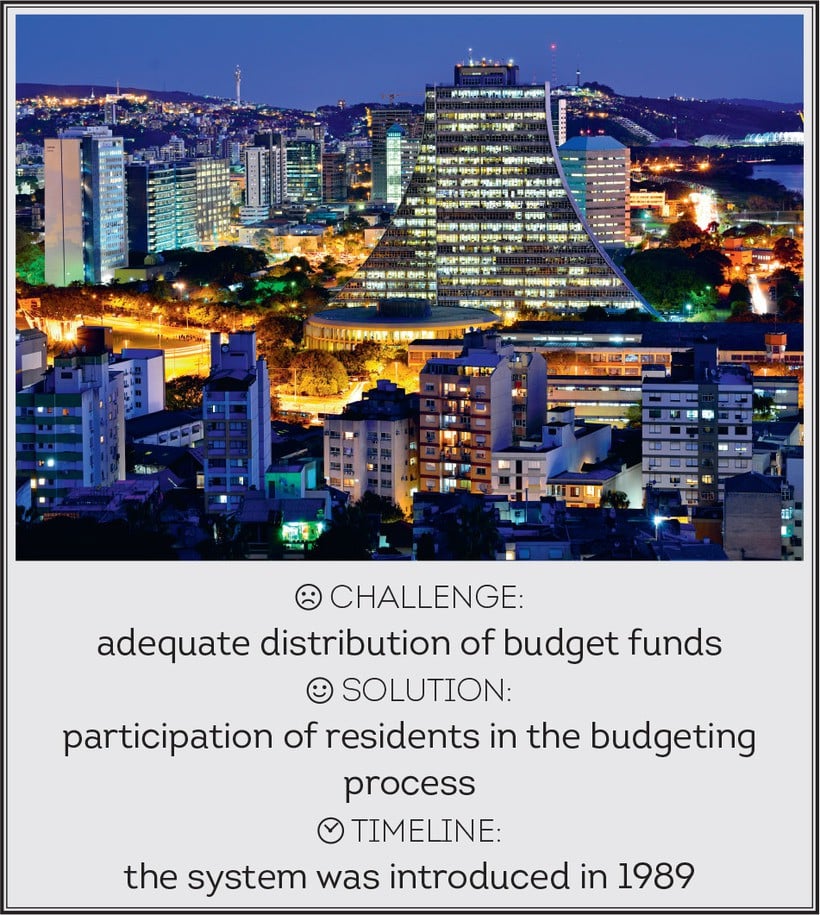
The system that was proposed back then still works today: Every year different forms of consultation take place – from large-scale district assemblies to taskforce formats. Each district proposes projects that it can benefit from, as well as overall municipal programs. Based on these recommendations the Porto Alegre administration approves its final budget. The civil servants are then entitled to initiate their own discussion and revisit specific ideas, but they cannot turn down these proposals. All in all, about 40,000 city residents are involved in the process.
During the first years, the city managed to resolve a variety of key problems: Virtually no districts were left without a water supply, the quality of social housing improved, and education and healthcare budgets have gone up. Since then the participatory budgeting system has been implemented in 140 other Brazilian cities, and other countries are looking into it as well: This September a pilot project was launched in New York City.
Medellín
Beautiful libraries can transform even a city of criminals – if they become a part of a new idea
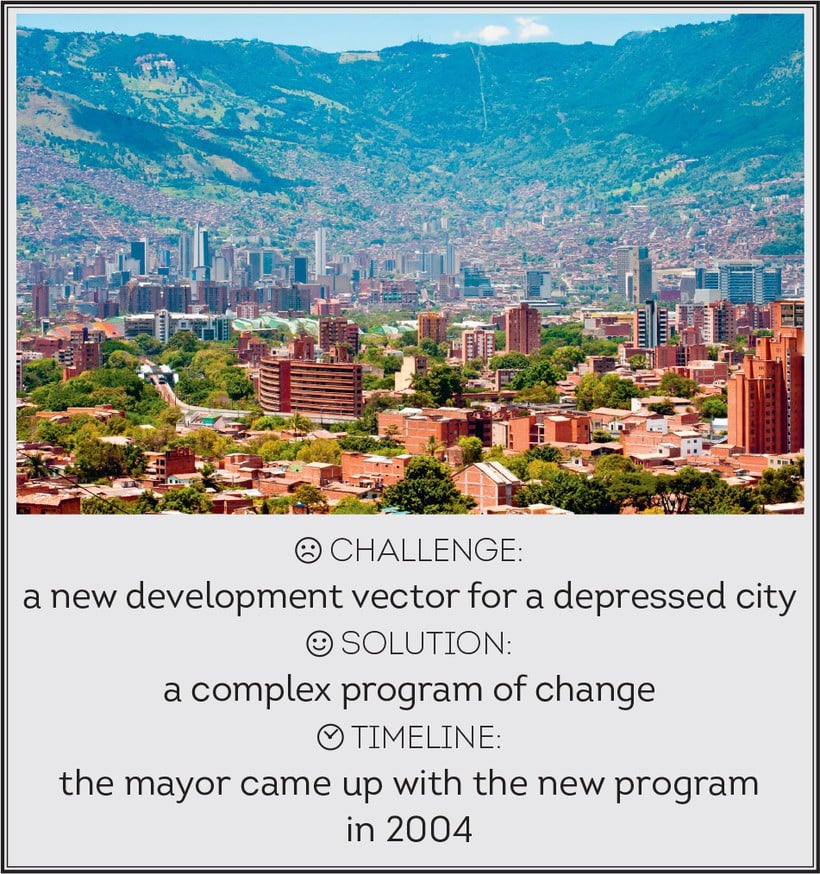
Sergio Fajardo, who became the city’s mayor in early 2004, was elected by local residents who had almost given up hope of seeing any changes. Instead of established politicians, they voted for an architect’s son – a mathematician and journalist by trade – and his group of supporters, which happened to include quite a few architects as well.
Fajardo and his team proposed a comprehensive program to modernize the city. The revenues from the city’s main taxpayer – a state-owned company called Empresas Públicas de Medellín – were diverted to reform the education system and repair the city’s schools. They also went to develop squares, parks and public transport, and construct buildings that have since become the city’s new landmarks – with a special focus on libraries. Today one can hardly call Medellín an exemplary city, but much has been achieved. News from Medellín is no longer dominated by crime stories. The murder rate dropped to 29 per 100,000 residents in 2006. Subsequently, tourist numbers went up from 95,000 in 2006 to 151,000 in 2011.
Carhuaz
This small Peruvian city completely revamped its waste-management system, saving the local river in the process
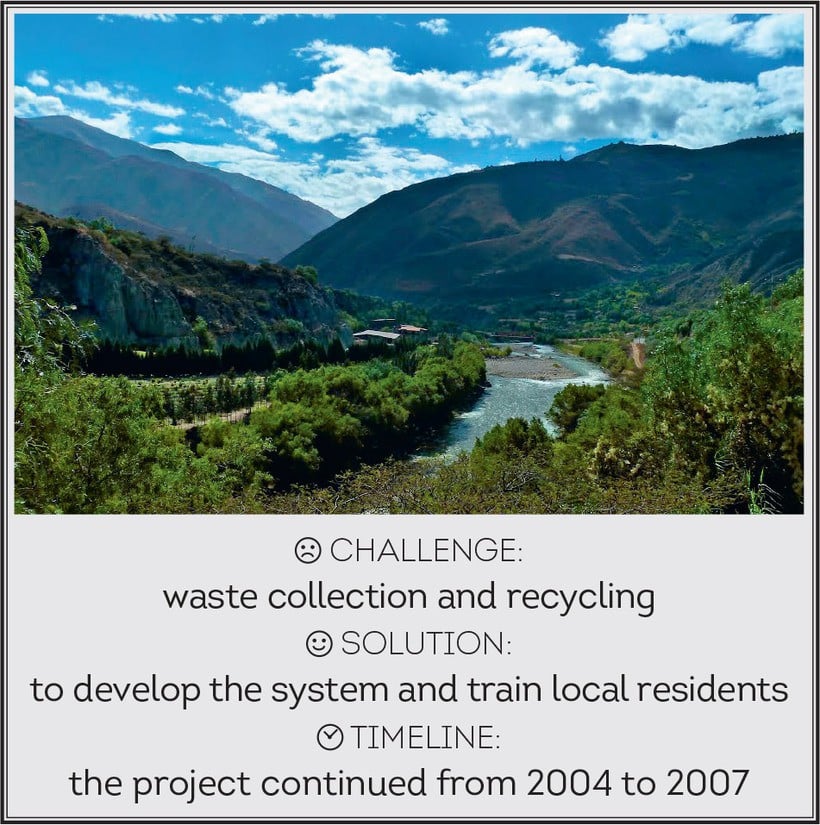
This small city on the banks of the Río Santa in Peru was confronted with a waste management problem. The local rubbish collectors would dump nearly 60% of all waste in the river, and only 35% of the city’s residents paid for waste removal and disposal. Peru’s environmental foundation Ciudad Saludable received sup-port and financial aid from international organizations, and proposed to the municipal authorities a solution.
The program included several different initia-tives: awareness raising, work with teachers and schoolchildren, the establishment of a training center, and changes in the operations of municipal services dealing with waste collection and disposal. Over three years they explained to local residents the difference between organic and non-organic waste, and taught them to recycle. Today 90% of local residents recycle their waste, and 85% pay for waste disposal – which refutes the popular myth that poor people do not concern themselves with environmental issues. Compost centers have been set up, along with relatively environmentally friendly landfills for non-organic waste. By extension there were also changes in the rules governing waste collection and disposal, and a special training center opened its doors as well.
Ahmedabad
Ahmedabad’s bus rapid transit (BRT) system has been recognized as the best in India
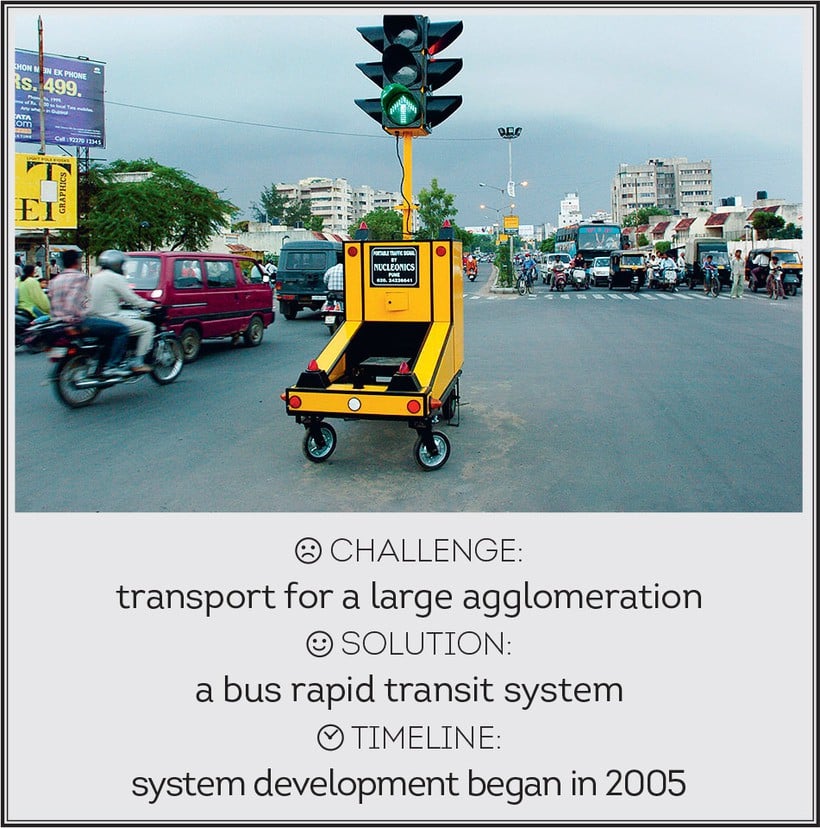
Many new cities have followed the example of Brazil’s Curitiba and introduced a BRT system. In 2009 one was implemented in Ahmedabad in India – a city with a population of six million. By 2035 the Ahmedabad agglomeration is likely to be home to 11 million people, and occupy an area of 1000 square kilometers. By that time the system needs to be fully operational.
The project began in 2005 with research focusing on the local residents’ transport needs, as well as the social, economic and technical aspects of implementing a BRT system in the city. A detailed plan was then prepared, which included the routes, the number of buses, and the relevant infrastructure. This plan also took into consideration the errors and successes of the developers of Delhi’s BRT, which had gone through hundreds of adjustments to the original project. Several dozen routes were identified, with technical routes introduced for municipal services providing BRT maintenance. The particular needs of pedestrians, cyclists and rickshaw drivers were taken into account during construction. Tata has designed special buses to be used on the streets of Ahmedabad, costing 50% less than similar vehicles produced by Volvo and Mercedes-Benz. Five lines are currently operational, servicing 75 stops.
Guangzhou
One of the largest BRT systems in the world is now operational in Guangzhou, China
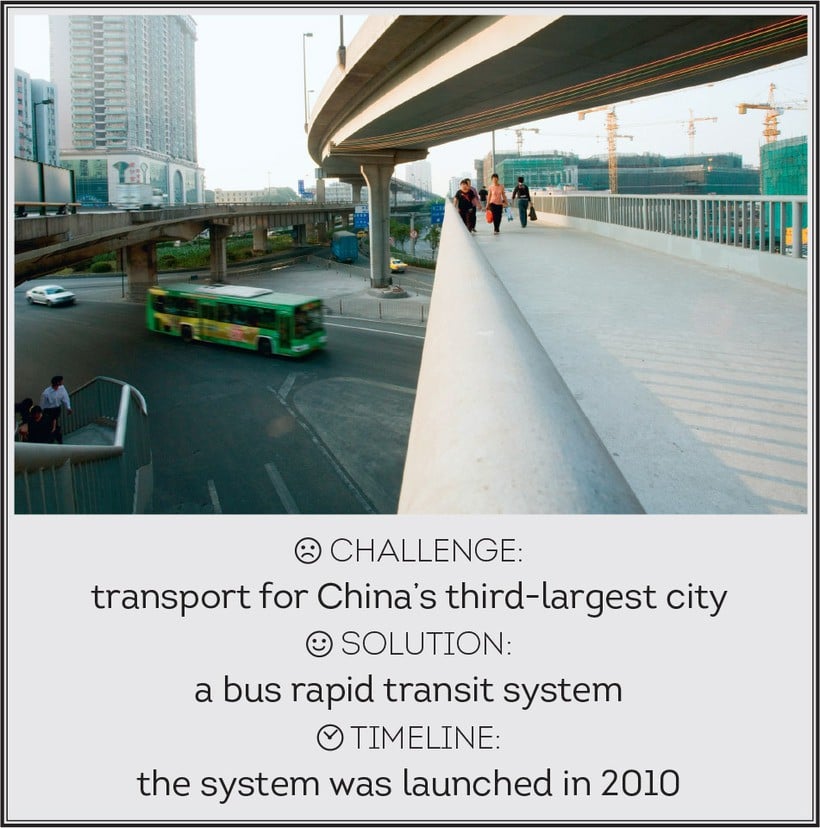
The Guangzhou bus rapid transit system became operational in 2010. So far, the system consists of three lines, but these are used by one million people every day, making Guangzhou’s BRT system the second-largest in the world in terms of capacity, just after Bogotá’s TransMilenio.
But the records do not stop there: Guangzhou has the world’s longest stops – up to 260 meters – and the shortest intervals between buses – as little as ten seconds. Three stops offer connections to the local metro system, and a bicycle service has been developed in parallel, with bike parking areas and bicycle rental stations located next to bus stops.
The buses are managed by seven companies controlled by a special agency, with another agency responsible for system planning and development. Special 18-meter-long buses service the Guangzhou lines, with dedicated lanes provided mainly along the center of motorways, separated from other lanes by both road markings and small curbs.
Iquique
Two houses for the price of one (and a very small price at that): a solution created by Chilean architects
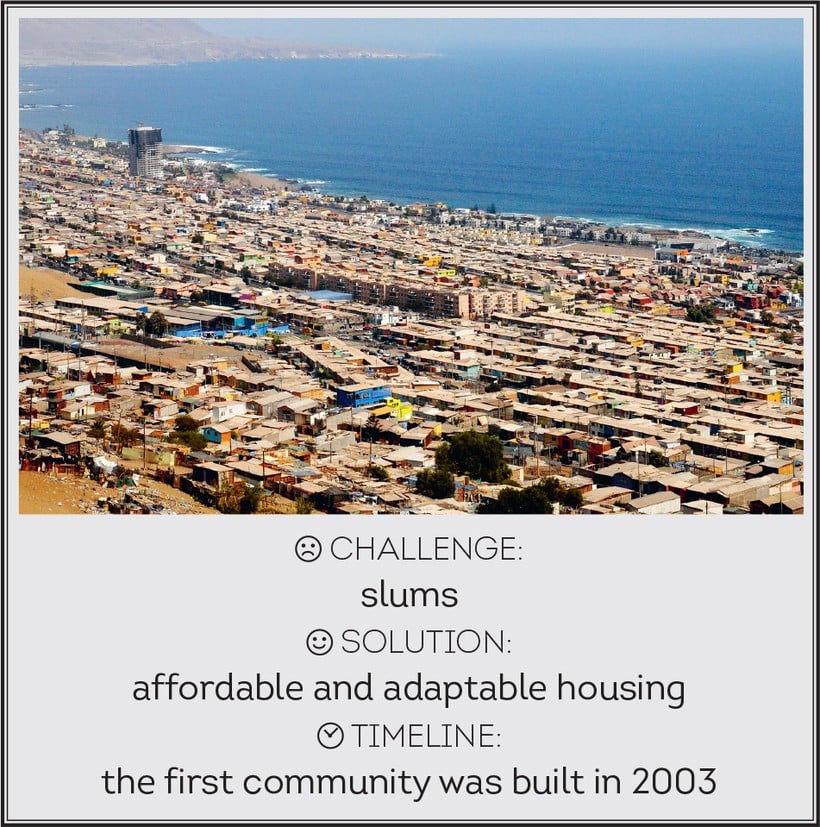
Researchers and architects from the Elemental architectural practice, headed up by Alejandro Aravena, were commissioned by the Chilean govern-ment to design housing for a hundred low-income families. Their budget was $7500 per housing unit, including infrastructure and construction costs. It was obvious to the architects that the usual solution to this problem – to simply build very cheap housing – would ultimately re-create the very slums from which the families were to be relocated in the first place: growing families add new rooms to their already cramped houses using any available materials, and can then no longer connect these to the requisite infrastructure.
Elemental developed a different approach, based on a unit with one part ready to house new residents immediately, and another part to be developed by them on their own. The units have all vital amenities, including electricity, running water, and a sewage system. Units are grouped into modules to form small blocks with courtyards, where neighborhood communities can form, helping maintain order both in the houses and in public spaces.
Since 2003 the model invented by Elemental has been replicated both in Chile and abroad.
State of Tocantins
A large-scale housing-construction program takes into account the region’s cultural variations
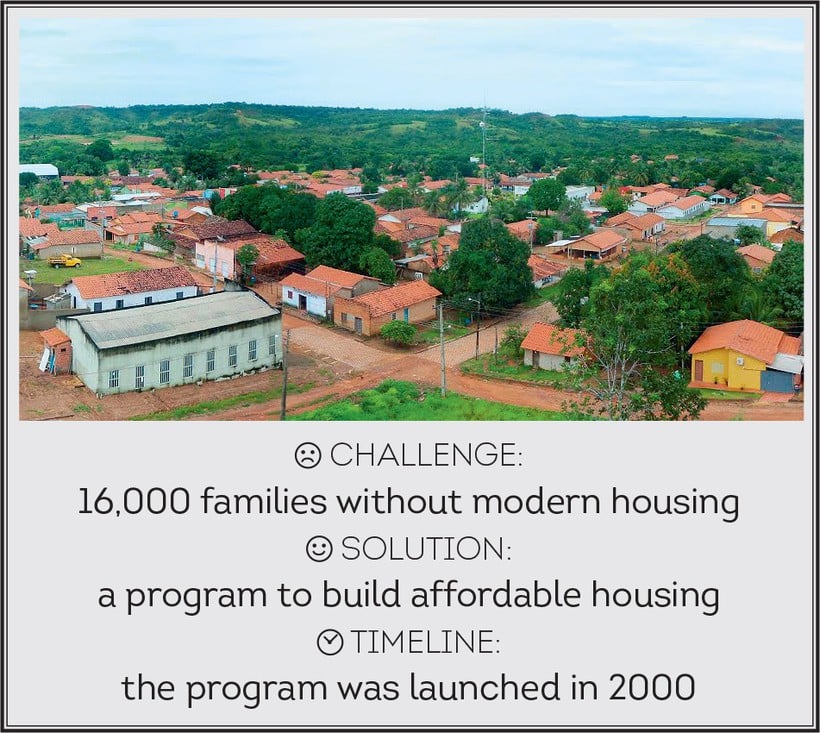
In the year 2000, the government of Tocantins state in Brazil launched a large-scale program to provide housing to 16,000 families unable to afford a house or a flat on their own. To implement it, the government had to develop a financing system that could raise the required $62 million in investments.
But the biggest problem was that the state had never dealt with a project of such complexity before. Even though basic housing parameters (cost of each unit, construction norms) were standardized, each of the 116 prefectures had previously run into its own individual problems related to the availability of construction materials, the qualifications of construction workers, and the customs of local communities.
Training centers for engineers, construction personnel and social workers were established within the framework of the program, along with special mechanisms to communicate with local communities, involving them in the construction process, showing them the benefits of housing, and explaining the importance of keeping it in good order.
Employees of the program still visit families living in the newly built homes. The sheer scale of the project spurred on other positive changes: new jobs have been created, new schools and hospitals have been built, and an enabling environment has been created for local businesses to develop.










